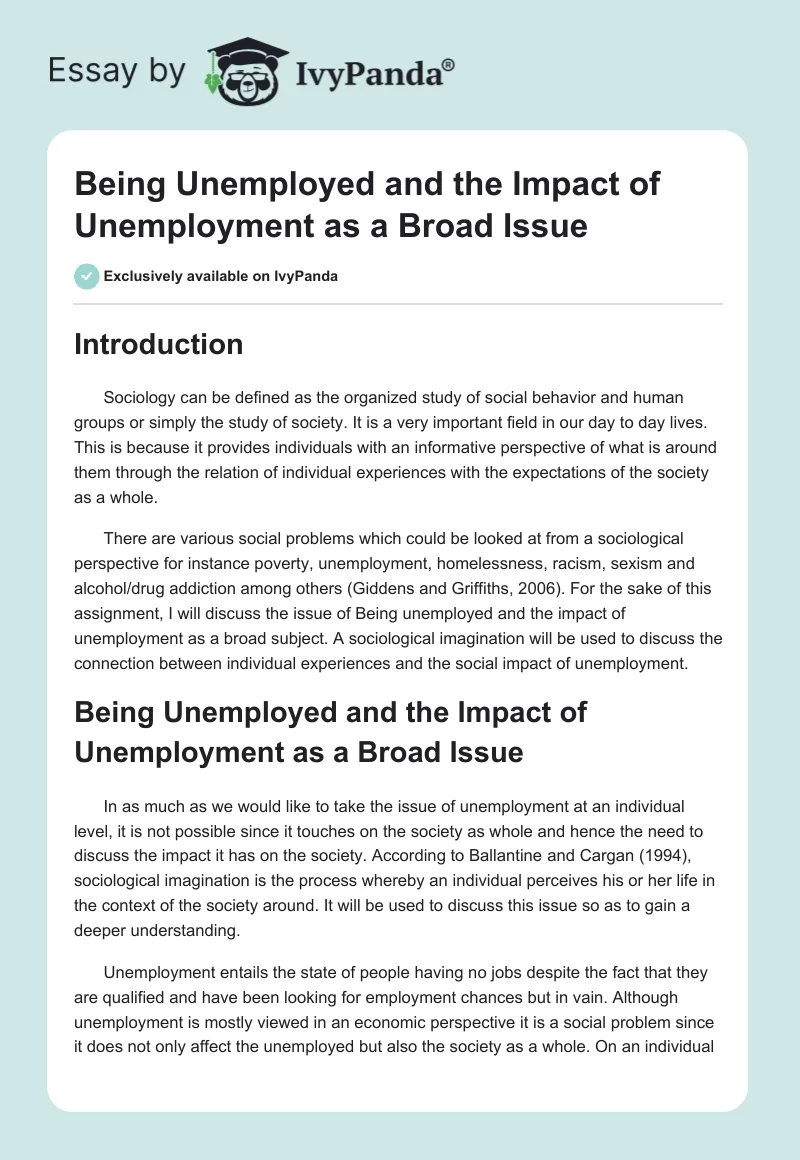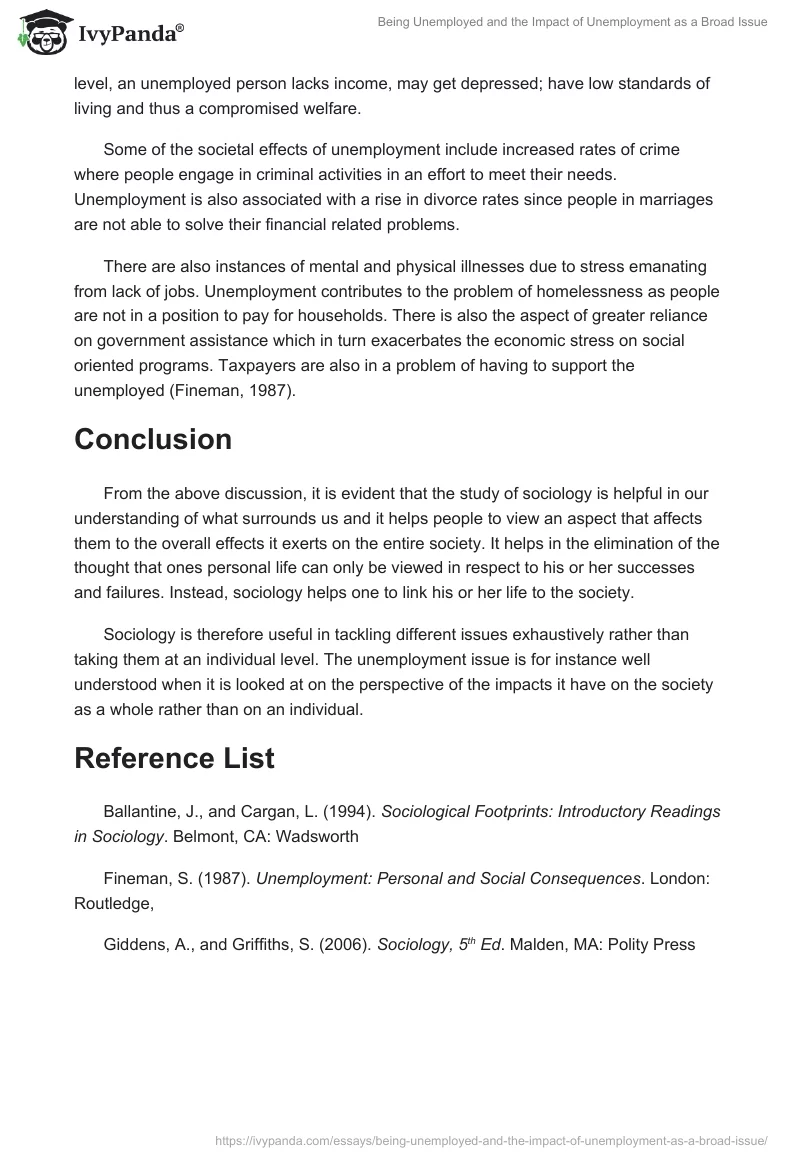Introduction
Sociology can be defined as the organized study of social behavior and human groups or simply the study of society. It is a very important field in our day to day lives. This is because it provides individuals with an informative perspective of what is around them through the relation of individual experiences with the expectations of the society as a whole.
There are various social problems which could be looked at from a sociological perspective for instance poverty, unemployment, homelessness, racism, sexism and alcohol/drug addiction among others (Giddens and Griffiths, 2006). For the sake of this assignment, I will discuss the issue of Being unemployed and the impact of unemployment as a broad subject. A sociological imagination will be used to discuss the connection between individual experiences and the social impact of unemployment.
Being Unemployed and the Impact of Unemployment as a Broad Issue
In as much as we would like to take the issue of unemployment at an individual level, it is not possible since it touches on the society as whole and hence the need to discuss the impact it has on the society. According to Ballantine and Cargan (1994), sociological imagination is the process whereby an individual perceives his or her life in the context of the society around. It will be used to discuss this issue so as to gain a deeper understanding.
Unemployment entails the state of people having no jobs despite the fact that they are qualified and have been looking for employment chances but in vain. Although unemployment is mostly viewed in an economic perspective it is a social problem since it does not only affect the unemployed but also the society as a whole. On an individual level, an unemployed person lacks income, may get depressed; have low standards of living and thus a compromised welfare.
Some of the societal effects of unemployment include increased rates of crime where people engage in criminal activities in an effort to meet their needs. Unemployment is also associated with a rise in divorce rates since people in marriages are not able to solve their financial related problems.
There are also instances of mental and physical illnesses due to stress emanating from lack of jobs. Unemployment contributes to the problem of homelessness as people are not in a position to pay for households. There is also the aspect of greater reliance on government assistance which in turn exacerbates the economic stress on social oriented programs. Taxpayers are also in a problem of having to support the unemployed (Fineman, 1987).
Conclusion
From the above discussion, it is evident that the study of sociology is helpful in our understanding of what surrounds us and it helps people to view an aspect that affects them to the overall effects it exerts on the entire society. It helps in the elimination of the thought that ones personal life can only be viewed in respect to his or her successes and failures. Instead, sociology helps one to link his or her life to the society.
Sociology is therefore useful in tackling different issues exhaustively rather than taking them at an individual level. The unemployment issue is for instance well understood when it is looked at on the perspective of the impacts it have on the society as a whole rather than on an individual.
Reference List
Ballantine, J., and Cargan, L. (1994). Sociological Footprints: Introductory Readings in Sociology. Belmont, CA: Wadsworth
Fineman, S. (1987). Unemployment: Personal and Social Consequences. London: Routledge,
Giddens, A., and Griffiths, S. (2006). Sociology, 5th Ed. Malden, MA: Polity Press


